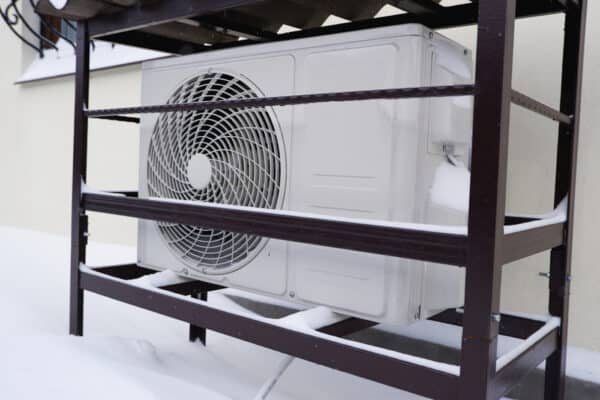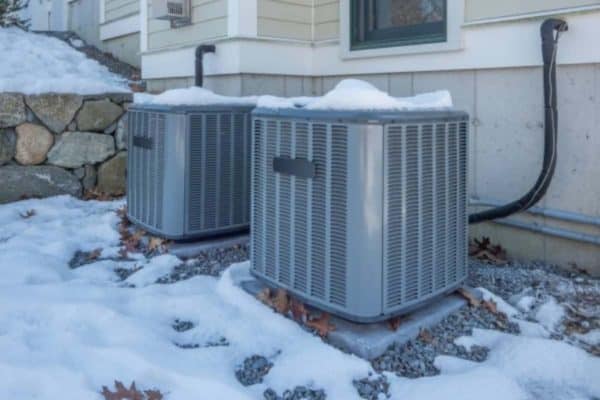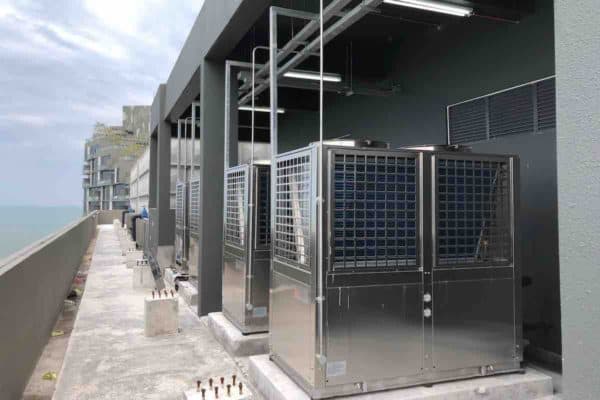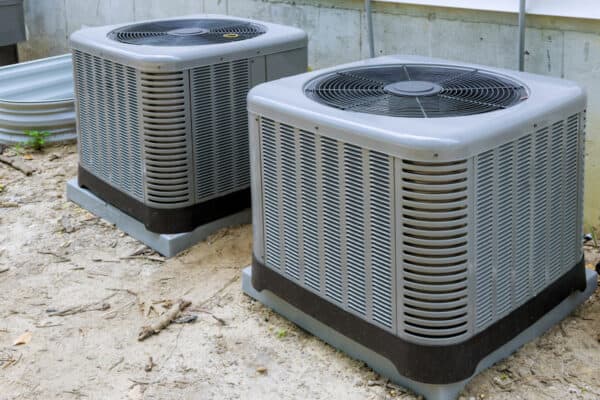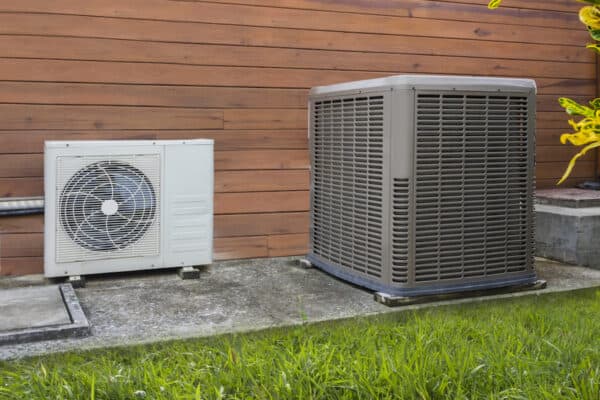How Tesla Heat Pump Works (vs HVAC Heat Pumps)
Tesla developed some of the most advanced technologies in the market including the heat pump system in their Model Y. I wonder how the Tesla heat pump works and how does it compare to HVAC heat pumps. So, I did some studies.
It turns out that the heat pump system in a Tesla Model Y has 12 different heating modes. The heat pump system is able to extract heat not just from the ambient air but also from the battery system and the vehicle drive train.
Furthermore, the heat pump system can operate the compressor and the blower fan motor in lossy mode to provide extra heating during extreme cold weather conditions.
I was overwhelmed by the complexity of the heat pump system in the Tesla Model Y. At the same time, I was excited to learn new and creative ways of designing an integrated HVAC system.
Components of Tesla Heat Pump
To understand how the heat pump system in a Tesla Model Y works, we need to briefly understand the system schematic and components that are related to HVAC.
Below is a colored schematic drawing extracted from the Tesla heat pump patent document.

HVAC related components:
- Radiator – Exchange heat with the ambient air.
- Liquid-Cooled Condenser – Exchange heat between coolant and refrigerant.
- Chiller – Circulate the coolant to the battery system, the power converter, the inverter and the oil heat exchanger. Also exchange heat between coolant and refrigerant.
- Compressor – Electronic driven compressor that compress the refrigerant.
- Expansion Valve – Expand and control the refrigerant.
- Evaporator – Provide cooling to the cabin.
- Cabin Condenser – Provide heating to the cabin
- Oil Heat Exchanger – Exchange heat between motor oil and coolant.
Coolant loop:
- Chiller
- Battery System
- Power Converter
- Inverter
- Oil Heat Exchanger
- Liquid-Cooled Condenser
- Radiator
Refrigerant loop:
- Compressor
- Cabin Condenser
- Expansion Valve
- Evaporator
- Chiller
- Liquid-Cooled Condenser
Both the chiller and the liquid-cooled condenser are able to exchange heat between coolant and refrigerant. The oil heat exchanger is used to separate coolant from the motor oil because the traction motor and the transmission need motor oil not only for cooling, but also for lubrication.
Heat Sources:
- Battery System
- Power Converter
- Inverter
- Oil Heat Exchanger (Traction Motor & Transmission)
- Radiator (Ambient Air)
- Low Voltage Heaters
How Tesla Heat Pump Cools the Vehicle Cabin?
While there are 12 different heating modes in a Tesla Model Y, there are only a handful of cooling modes. The heat pump system have different cooling modes for other components such as the battery system.
Below is a colored schematic drawing illustrating the basic cooling mode:
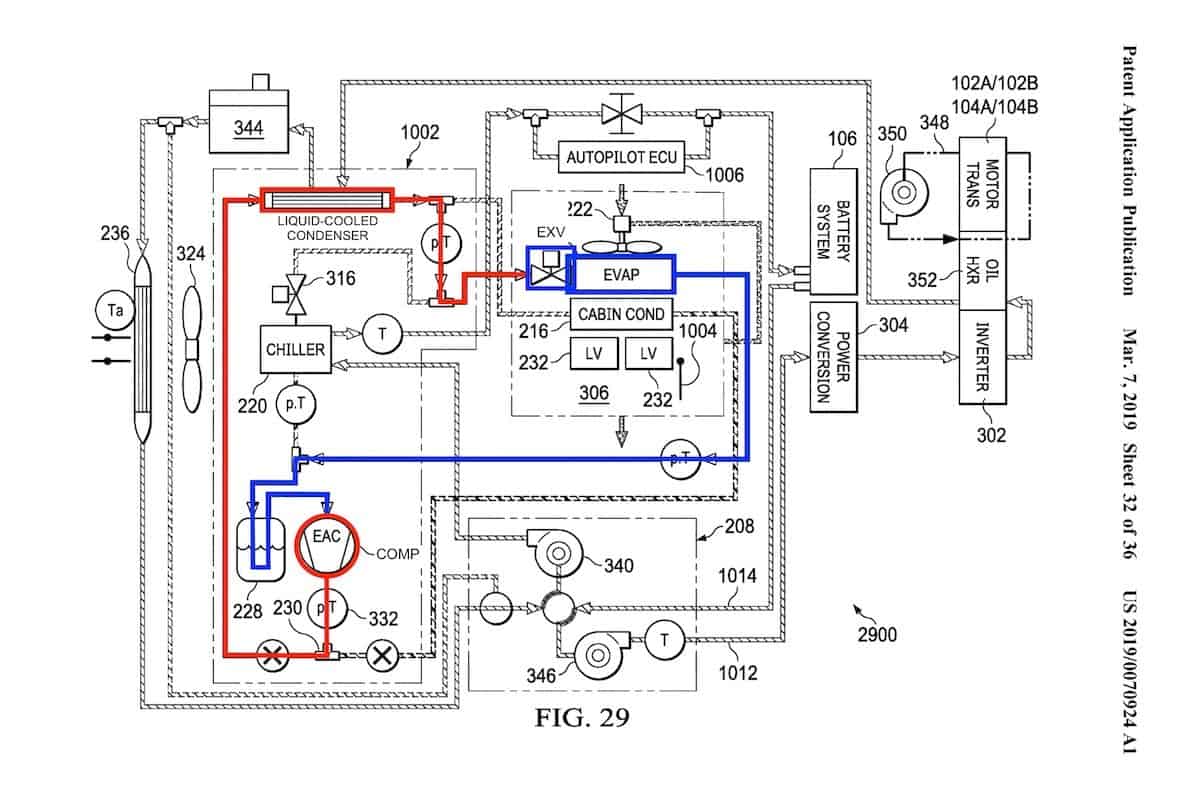
The heat pump system in a Tesla Model Y can be compared to HVAC water-cooled chillers. HVAC water-cooled chillers reject heat energy to water and the heat energy is later dissipated by cooling towers.
Similarly, the Tesla heat pump absorbs heat energy from the vehicle cabin (and thus, cooling the cabin) (blue color lines) and rejects the heat energy at the liquid-cooled condenser to the coolant that is flowing through the radiator which dissipates the heat energy to the ambient air (red color lines).
Water-cooled air conditioners are known to be more efficient than air-cooled air conditioners. Hence, I believe the heat pump system in the Tesla Model Y does the same.
How Tesla Heat Pump Heats the Vehicle Cabin?
As mentioned earlier, there are 12 different heating modes in a Tesla Model Y but, I’ll only bring up 3 heating modes that are highly relevant to HVAC heat pumps.
1. Ambient Air Source Heating Mode
Ambient air source heating mode is a descriptive name I gave to one of the heating modes of the heat pump system in a Tesla Model Y. It can be compared to HVAC water-source heat pumps.
Below is a colored schematic drawing illustrating the ambient air source heating mode:
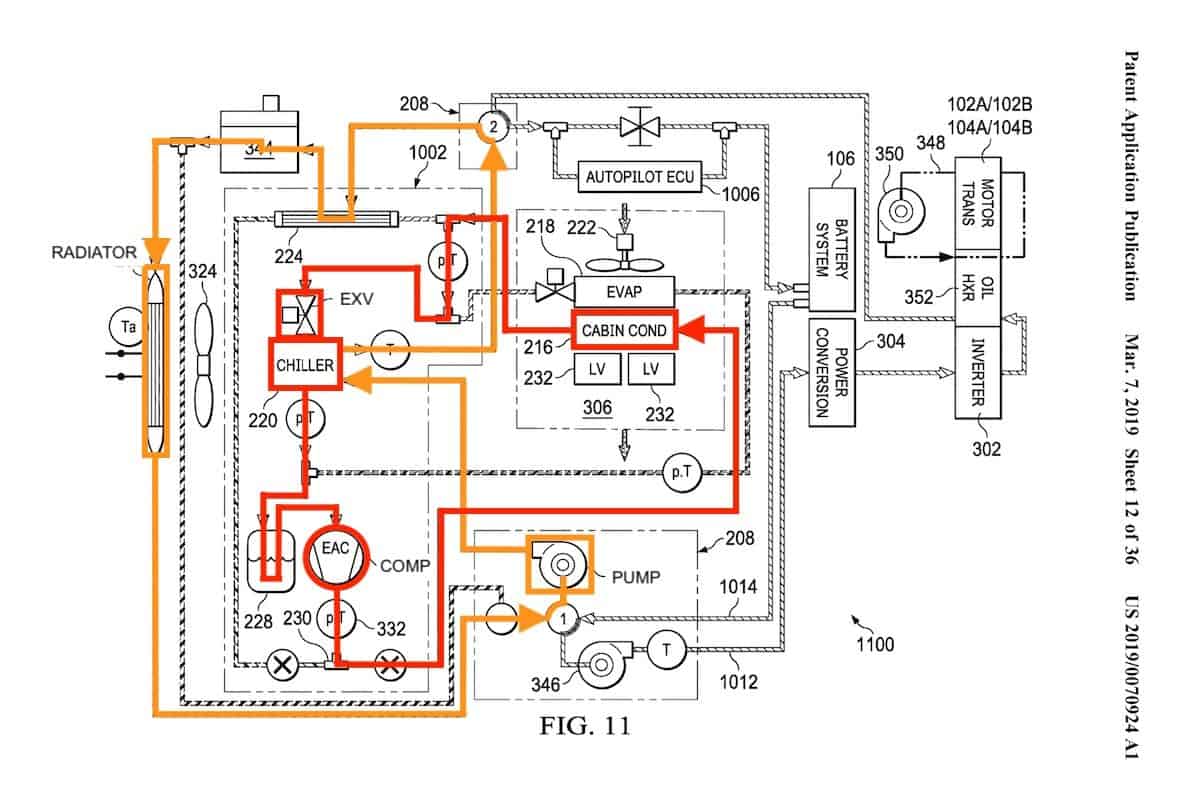
To start, the chiller serves as a heat exchanger, exchanging heat energy between the coolant and the refrigerant. The chiller sends the coolant around an isolated loop to the radiator to absorb heat energy from the ambient air (orange color lines).
The liquid-cooled condenser is not in operation and all control valves divert the coolant as intended.
As for the heat pump system, it works the same as HVAC heat pumps. It starts with the compressor which sends hot refrigerant to the cabin condenser. The cabin blower fan circulates air through the cabin condenser and thus, heating the cabin (red color lines).
Then, the refrigerant continues its path to an expansion valve located right before the chiller. The refrigerant expands and enters the chiller. The cold refrigerant absorbs the heat energy from the coolant and the cycle repeats.
Although the heat energy is not directly harvested from the ambient air by the heat pump system, it is still considered as an ambient air source heating since the heat energy is originated from the ambient air.
To understand how a heat pump is able to harvest heat energy from the ambient air even when the ambient air is chilling cold, see my post on how does a heat pump work in winter?
When compared to HVAC water-source heat pumps, the coolant at the chiller can be viewed as condenser water, river water or underground water which all of them are the source of heat energy.
We don’t have details on the efficiency of the Tesla heat pump but I believe the above mode is not as efficient as HVAC air-source heat pumps since an extra heat exchanger (the chiller) and the coolant are causing energy loss.
2. Heat Energy Recovery Heating Mode
Heat energy recovery heating mode is a descriptive name I gave to one of the heating modes of the heat pump system in a Tesla Model Y. Personally, I think this is the coolest heating mode.
In this heating mode, the Tesla heat pump harvests heat energy from almost all vehicle components including the battery system, the power converter, the inverter, the traction motor and the transmission. The contribution of the autopilot ECU is negligible.
Below is a colored schematic drawing illustrating the heat energy recovery heating mode:
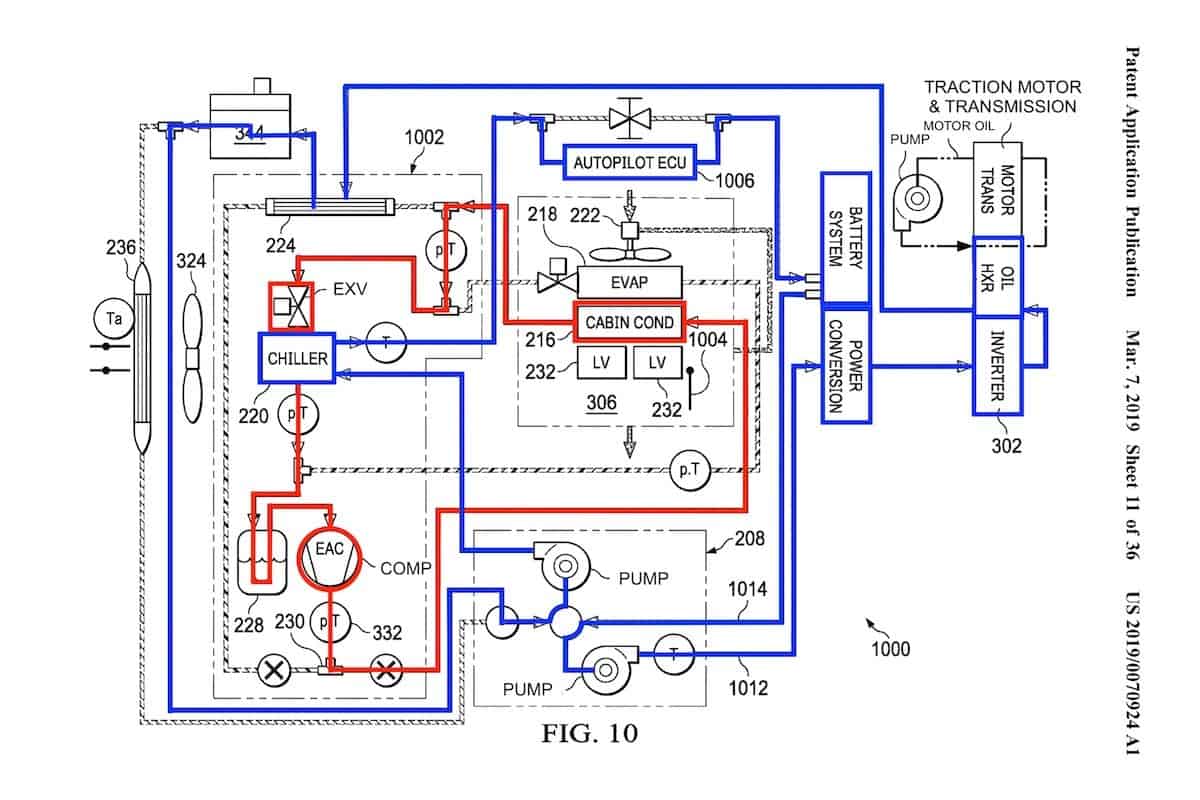
The vehicle thermal management system can break into two parts; a) the heat pump refrigerant loop and b) the chiller coolant loop. The coolant loop is responsible for harvesting heat energy and the refrigerant loop is responsible for heating the cabin.
The coolant loop starts with the chiller sending it through the autopilot ECU, the battery system, the power converter and the inverter and the oil heat exchanger before flowing back to the chiller (blue color lines).
The coolant usually bypasses the radiator and straight flows into the chiller. However, if some of the vehicle components (battery system, power converter, etc.) are giving out too much heat, the coolant flows to the radiator to dissipate some amount of the heat energy before flowing back to the chiller.
As for the heat pump refrigerant loop, the working principle is the same as the ambient air source heating. The heat pump system source the heat energy from the chiller (red color lines) which the heat energy is harvested from vehicle components that would otherwise be wasted anyway.
In HVAC, heat pumps always have a higher capacity in heating than in cooling. It’s because the unit itself is giving out heat energy during operation and the heat energy is harvested back for heating. That’s why we always see the heating capacity as slightly more than the cooling capacity in HVAC heat pumps.
This heating mode can be considered as renewable or “free energy” since the battery system and the vehicle drive train are generating heat during operation anyway, regardless of the heat pump system.
Nevertheless, a Tesla Model Y can’t always stay in this heating mode because under certain conditions, the battery system is “too cold” to provide heat energy as batteries perform the best at a certain temperature range. For instance, standard batteries drop 50% in capacity at -22°F (-30°C) [source].
In this case, the control valve, “octovalve” or 8-way valve developed by Tesla will isolate the battery system, cutting it off from the coolant loop so that it stops the heat pump system from harvesting heat energy from the battery system which will affect the vehicle performance.
However, without the battery system, the heat source may not be sufficient for the heat pump system to heat the cabin. Hence, the vehicle thermal management system constantly switching between heating modes to compensate and maintain thermal comfort in the cabin.
On a side note, if you are an HVAC engineer, I think you wouldn’t want to miss this chance to check out the Design Engineer Starter Pack. It is packed with excel calculators, diagrams and charts that are designed to help you strive in your HVAC career.
3. Compressor as a Heater Heating Mode
In a dire situation where the ambient temperature drop below freezing point, the compressor of the Tesla heat pump will switch to an inefficient mode or “lossy mode” to provide a direct one-to-one energy ratio heating to the cabin.
Below is a colored schematic drawing illustrating the compressor as a heater heating mode:
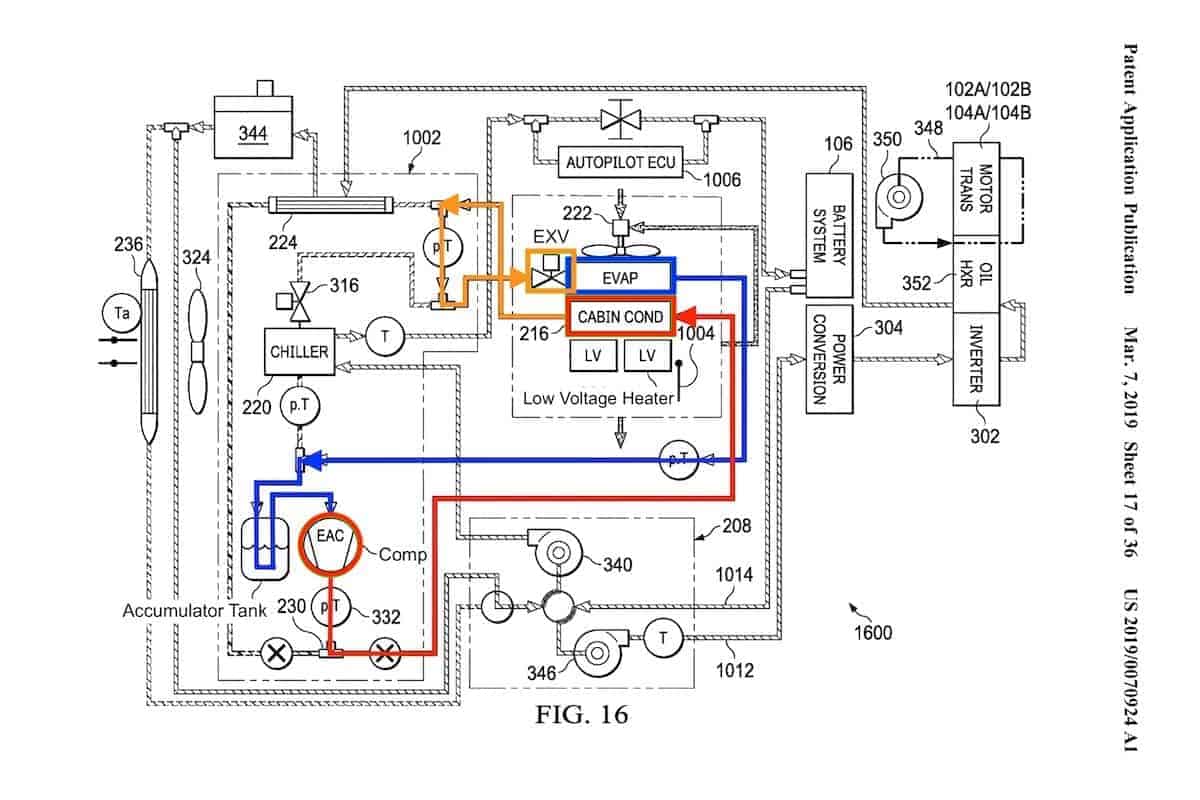
Under extreme cold weather conditions, there is not enough heat energy in the ambient air for the heat pump system to harvest. Besides, the vehicle drive train gets cooled by the extremely cold ambient air. Furthermore, the battery system is not only unable to spare any heat but it needs heating also to maintain vehicle performance.
In such a dire situation, the vehicle thermal management system will manipulate the slip angle of the electric motor of the compressor and the blower fan in order to force them to operate inefficiently (lossy mode).
When the compressor and the blower fan operate inefficiently, they generate an excessive amount of heat energy which is then harvested for cabin heating. On top of that, low voltage heaters in the cabin may activate to assist in heating the cabin.
In this mode, the compressor sends hot refrigerant to the cabin condenser, heating the cabin (red color lines). Then, the refrigerant flows to an expansion valve (orange color lines) before entering the evaporator located inside the cabin (blue color lines).
Inside the cabin, the air is circulated through the evaporator first and gets cooled. Then, it gets heated by the cabin condenser before discharging back to the cabin.
Such a heating method may look silly and somewhat waste energy. However, it resulted in net heating to the cabin due to the heat energy from the compressor and the blower fan. When there is no heat source available for the heat pump system to harvest, it heats up its own components to generate heat.
To elaborate further, such a heating method is equivalent to the compressor being placed inside the cabin and heating the cabin like an electric space heater but, without physically being inside the cabin. Mind-blowing huh?
Nevertheless, this heating mode yields a COP of 1, just like an electric space heater. However, it keeps the people inside the vehicle warm and toasty even when the outside temperature is 10 degrees Celsius below freezing point.
Most HVAC heat pumps are capable of working down to an ambient temperature around 5°F (-15°C). However, the evaporator gets freeze up frequently. Heat pumps have to stop heating frequently to defrost ice when working under extreme cold weather conditions. For details, see my post on mini splits working in cold climates.
Conclusion
The heat pump system in a Tesla Model Y is extremely complicated. What I’ve just presented is just the tip of the iceberg. There are a lot more things going on when it comes to heating other vehicle components.
I would say it’s very impressive that Tesla is able to combine HVAC and vehicle thermal management. It is very efficient and not wasting any energy which is critical to vehicle range.
Though it is very complex, it’s not much of a difference from HVAC heat pumps. After all, the working principle is the same but Tesla integrated it with other vehicle components which is the reason why many people are wondering how Tesla heat pump works.
If you have anything to add (or ask) about this topic, leave a comment down below!



